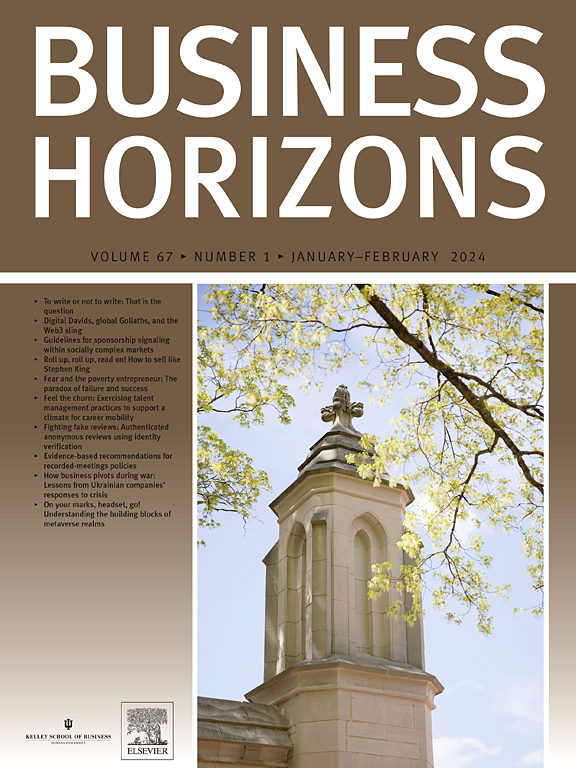Gender representations and user engagement in social media posts of companies: Dream crazier or keep walking?
IF 7
3区 管理学
Q1 BUSINESS
引用次数: 0
Abstract
Harmful gender stereotypes perpetuated and reinforced via gendered corporate communication can have deeply adverse consequences—particularly for women. Although a rich body of work has examined gender representation and its effects on advertising, there are hardly any insights into corporate social media communication. It is important to examine this as social media is a critical channel for stakeholder engagement, especially when leveraging its visual affordances. Hence, we conducted a visual social semiotic content analysis of 543 Instagram posts of international B2C companies to see how companies represented gender on social media and how various aspects of gender representation are related to user engagement. We found both diverse and inclusive gender portrayals and the sticky persistence of stereotypes. While women were depicted more as individual, central figures compared to men—allowing women to gain more visibility—women were more often associated with female gender-stereotypical topics than men. While no differences were found between gender representations and user engagement, user engagement differed between visuals showing men and women when considering their ethnicity. As such, we offer five evidence-based recommendations on how companies can contribute to gender equity by addressing gendered communication on social media.
企业社交媒体帖子中的性别表征与用户参与度:梦想更疯狂还是继续前行?
有害的性别刻板印象通过性别化的公司沟通得以延续和强化,可能会产生严重的不良后果——尤其是对女性而言。尽管有大量的研究研究了性别代表性及其对广告的影响,但几乎没有任何关于企业社交媒体传播的见解。审视这一点很重要,因为社交媒体是利益相关者参与的关键渠道,尤其是在利用其视觉效果时。因此,我们对543个国际B2C公司的Instagram帖子进行了视觉社会符号学内容分析,以了解公司如何在社交媒体上表现性别,以及性别表现的各个方面如何与用户参与度相关。我们发现了多样化和包容性的性别描述,以及顽固的刻板印象。虽然与男性相比,女性更多地被描绘成个人的中心人物——这让女性获得了更多的关注——但女性比男性更常与女性性别刻板印象的话题联系在一起。虽然性别表征和用户参与度之间没有差异,但考虑到种族因素,男性和女性的视觉用户参与度存在差异。因此,我们就企业如何通过解决社交媒体上的性别交流问题,为性别平等做出贡献提供了五条基于证据的建议。
本文章由计算机程序翻译,如有差异,请以英文原文为准。
求助全文
约1分钟内获得全文
求助全文
来源期刊

Business Horizons
BUSINESS-
CiteScore
17.70
自引率
5.40%
发文量
105
期刊介绍:
Business Horizons, the bimonthly journal of the Kelley School of Business at Indiana University, is dedicated to publishing original articles that appeal to both business academics and practitioners. Our editorial focus is on covering a diverse array of topics within the broader field of business, with a particular emphasis on identifying critical business issues and proposing practical solutions. Our goal is to inspire readers to approach business practices from new and innovative perspectives. Business Horizons occupies a distinctive position among business publications by offering articles that strike a balance between academic rigor and practical relevance. As such, our articles are grounded in scholarly research yet presented in a clear and accessible format, making them relevant to a broad audience within the business community.
 求助内容:
求助内容: 应助结果提醒方式:
应助结果提醒方式:


